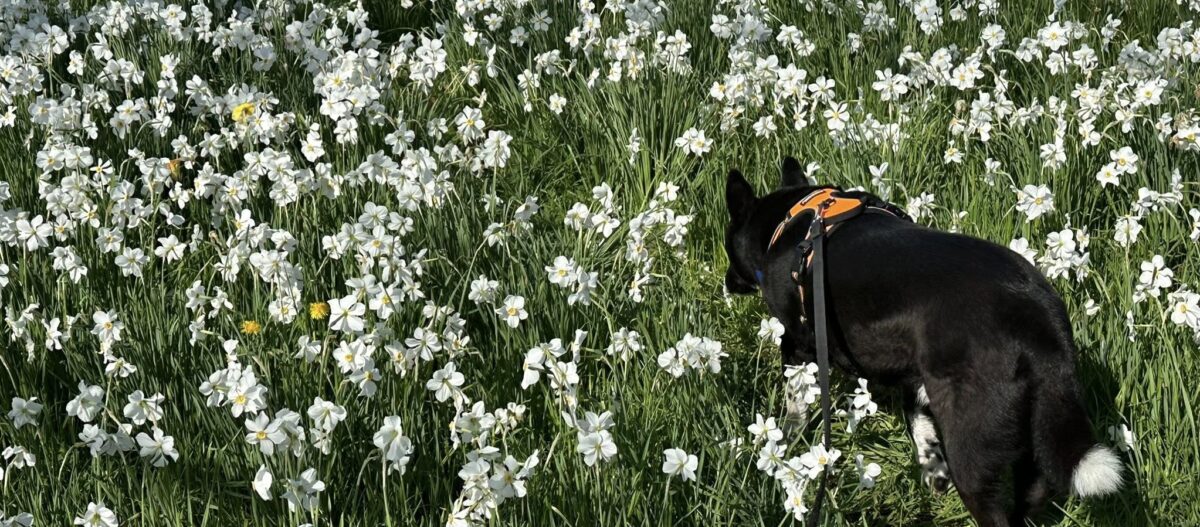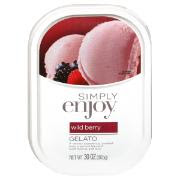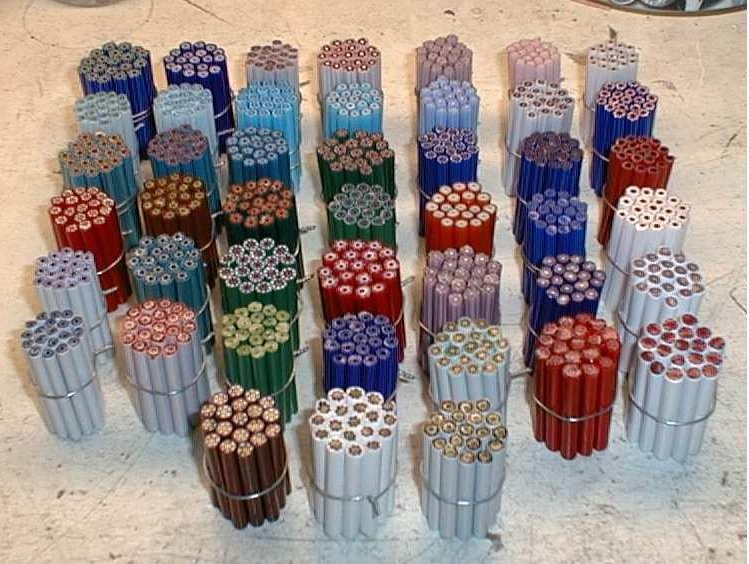I love things made of glass, always have. When I was very young, my grandmothers house was a refuge – she had a lovely little house full of domestic and exotic treasures. One piece that I particularly adored, caressed and held in my hands just to feel the smooth surface and heavy weight of it… was this…
This paperweight was gift to my great grandfather at Christmas time from a client in NYC – Acker & Jablow, a fabric wholesaler in the garment district in the early 1900’s. My grandmother kept this on her desk for many years. The design is what is referred to as Millefiore – “The term millefiori is a combination of the Italian words «mille» (thousand) and «fiori» (flowers). A. Pellatt (in his book «Curiosities of Glass Making») was the first to use the term «millefiori», which appeared in the Oxford Dictionary in 1849. While the use of this technique long precedes the term millefiori, it is now frequently associated with Venetian glassware.”
This is what millefiore canes look like before they are used to create art –
Some History on paperweights –
Nineteenth century revival of the glass industry -In early nineteenth-century Europe, a new creative potential developed in the decorative arts. An increasingly urban population and an expanding market of goods created by the Industrial Revolution stimulated the manufacture of many new decorative novelties. In the mid-1840s, glass paperweights appeared. They were a wholly modern, functional glass form that drew upon the ancient glassmaking techniques of millefiori and lampwork and the late-eighteenth century technique of cameo incrustation.
The sudden emergence and popularity of paperweights can be attributed not only to their decorative appeal but also to a growing Victorian leisure-time interest in letter writing. This fashionable upper and middle class pastime assured their profitable manufacture along with many other glass accessories related to letter writing, all of which were purchased inexpensively at stationery and novelty shops.
My collection over the years has grown, most pieces kept in a small curio cabinet in the keeping room. This is a jellyfish by Richard Satava – the photo doesn’t do it justice – very luminescent in the right lighting, as are jellyfish in nature.
His reef life paperweights are so vibrant…
Some of my “sea” collection…
Some reds…
Other glass – bottle stoppers my mother found on Cedar Grove Beach in SI
– Marbles, a glass heart – don’t break it!
My seaglass from all over –
..and mercury glass.
*love*


































